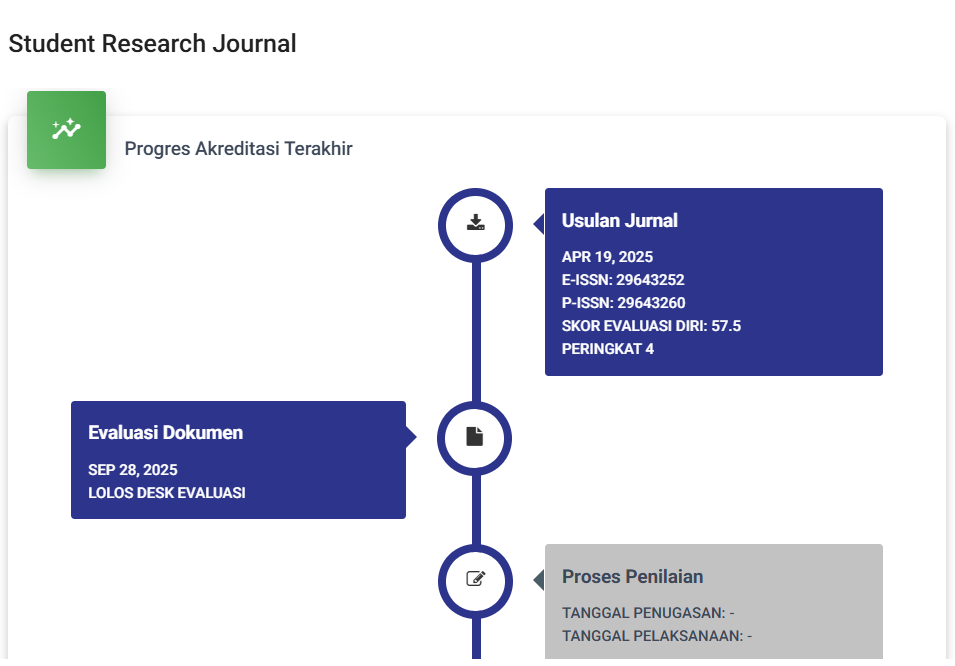Pola Berpikir Serialist Siswa Dengan Kemampuan Matematis Tinggi Dalam Menyelesaikan Masalah Aritmatika Sosial Kelas VII SMPN 1 Ngantru
DOI:
https://doi.org/10.55606/srjyappi.v1i4.520Keywords:
Pattern, Thinking, Serialist, Mathematical Ability, Social ArithmeticAbstract
This research is caused by the mindset of students with high mathematical abilities in solving mathematical problems, especially social arithmetic, where the serialist pattern is characterized by working with procedural and operational abilities and taking a local approach. The findings in partner schools are that the majority of students work on questions according to what is taught, starting from writing down the elements in the questions, sorting out which formula is right to writing valid conclusions on the answer sheet. This study aims to describe the Serialist thinking patterns of students with high mathematical abilities in solving Social Arithmetic problems for class VII students of SMPN 1 Ngantru. This research is a descriptive qualitative research with a case study approach. The subjects in this research activity were class VII of three students at SMPN 1 Ngantru. Data collection techniques were carried out by providing test questions and open interviews. Data analysis through three steps, namely data reduction, data presentation, and drawing conclusions. The results of the research show that in the process of solving problems students with serialist thinking skills tend to understand problems in an orderly and systematic manner which can be seen on the answer sheets of each subject. Students tend to work on questions according to the information that has been presented and then process and produce the right answers.
References
Baharuddin, Esa, “Teori Belajar dan Pembelajaran”, (Jogjakarta: Ar- Ruzz Media, 2010)
Clewley, Natalie. (2011). mining Learning Preferences in Web-based Instruction: vs Wholist. Educational Technology & Society
Isroil, Ahmad Ketut Budayasa, dan Masriyah, “Profil Berpikir Siswa SMP dalam Menyelesaikan Masalah Matematika ditinjau dari Kemampuan Matematika”, JRPM, 2017
J.R. Raco, Metode Penelitian Kualitatif Jenis Karakteristik dan Keunggulannya, (Jakarta: Grasindo, 2010
Pask and Scott dapat dilihat dalam, Chairul Anwar, Teori-Teori Pendidikan Klasik Hingga Kontemporer (Cet.I; Yogyakarta: IRCiSoD, 2017)
Pask, G.(1976).”Style and strategies of learning” dalam The British Journal of Educational Psychology,46
Pramesti, Cicik “Implementasi Teori Belajar Gagne Untuk Meningkatkan Hasil Belajar Siswa”, Cakrawala Pendidikan, 15:2, (Oktober 2013)
Sartina, 2018, Implementasi teori Sibernetik dalam pembelajaran PAI untuk membentuk kemampuan memecahkan masalah padapeserta didik di UPT SMKN 2 Wajo.Skripsi.Makassar: FTK UIN Alauddin
Stephen P. Robbins dan Timonthy A. Judge, Perilaku Organisasi, terj. Diana Angelica, dkk., (Jakarta: Salemba Empat, 2009)
Sugiyono Metode Penelitian Kuantitatif, Kualitatif, dan R&D, (Bandung: Alfabeta, 2017),
Susanto, Heriono Studi Korelasi Teori Belajar Sibernetik dalam Efektivitas Pembelajaran Pendidikan Agama Islam (PAI) di SMP Al-Falah Deltasari Waru Sidoarjo, Surabaya: Jurusan Pendidikan Agama Islam, Skripsi, Fakultas Tarbiyah, 2009
Thobroni. (2015). Belajar dan Pembelajaran .Yogyakarta: Ar Ruzz Media.
Tim MKPBM Jurusan Pendidikan Matematika, Strategi Pembelajaran Kontemporer, (Bandung: JICA Universitas Pendidikan Indonesia, 2001)
Wibawa,Kadek Adi Defragmenting Struktur Berpikir Pseudo dalam Memecahkan Masalah Matematika, (Yogyakarta: Deepublish, 2016)
Yuwono, Aries Tesis, “Profil Siswa Sma Dalam Memecahkan Masalah Matematika Ditinjau Dari Tipe Kepribadian”, (surakarta:UNC, 2010)
Downloads
Published
How to Cite
Issue
Section
License
Copyright (c) 2023 Marchel Akbar Putra, Sutopo Sutopo

This work is licensed under a Creative Commons Attribution-ShareAlike 4.0 International License.








